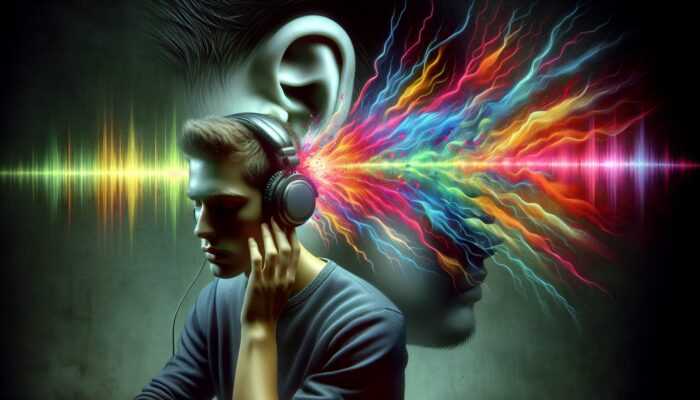Last Updated on 17/10/2025 by Admin
Uncovering the Underlying Causes of Hearing Loss in Chefs and Kitchen Staff
Recognising Sources of Noise Exposure in Kitchen Workplaces
Ongoing exposure to high-decibel noise levels in kitchens plays a critical role in the development of hearing loss among chefs and kitchen staff. This noise predominantly originates from various machinery and equipment, including blenders, food processors, deep fryers, and dishwashers, all of which are infamous for generating high volumes. Furthermore, the loud hum of exhaust fans combined with the continuous clanging of pots and pans creates an auditory environment that can severely impact auditory health. Identifying these sources of noise is essential for implementing effective protective strategies aimed at preserving hearing.
Minimising exposure to these noisy appliances can significantly enhance the auditory health of kitchen personnel. For instance, selecting quieter versions of appliances or integrating sound-dampening materials can lead to a noticeable decrease in noise levels. Chefs should also contemplate reorganising their workspaces to increase distance from these loud machines. By adopting a thoughtful approach, kitchens can evolve into safer environments that promote hearing conservation and minimise the risk of long-term auditory damage.
Assessing the Consequences of Prolonged Noise Exposure
Extended duration of exposure to elevated noise levels in kitchen environments can result in irreversible damage to auditory functions. Initial signs of hearing loss may present as challenges in comprehending conversations, a persistent ringing in the ears referred to as tinnitus, and an increased tendency to raise the volume on various devices. Chefs might struggle to hear orders clearly or communicate effectively with team members, leading to frustration and potential mistakes in the kitchen. Recognising these symptoms at an early stage is vital for initiating appropriate interventions.
To safeguard their hearing, chefs should embrace proactive measures that prioritise auditory health. This includes scheduling regular hearing assessments to track any changes in their hearing and engaging in protective practices. Straightforward adjustments, such as donning hearing protection, limiting exposure to the loudest equipment, and taking breaks in quieter areas, can profoundly influence long-term auditory health. By taking these initiatives, chefs can secure a sustainable career in a demanding auditory landscape.
Investigating Additional Factors Contributing to Hearing Loss
In addition to noise exposure, various medications and health conditions can worsen hearing loss among kitchen staff. Certain medications, such as specific antibiotics and chemotherapeutic agents, possess ototoxic properties that can adversely affect hearing. Moreover, health issues like diabetes and hypertension can diminish blood flow to the auditory system, increasing vulnerability to hearing loss. Being aware of these factors is crucial for chefs aiming to effectively protect their hearing.
Chefs can implement proactive measures to safeguard their hearing by ensuring regular medical check-ups and discussing any prescribed medications with their healthcare providers. Furthermore, lifestyle modifications, such as embracing a balanced diet rich in antioxidants and omega-3 fatty acids, can positively impact auditory health. Promoting open discussions about hearing protection within the kitchen can cultivate a culture of awareness and concern, ultimately enhancing the overall health and safety of kitchen staff.
Acquiring Expert Perspectives on Hearing Loss in Chefs and Kitchen Staff
Establishing Effective Preventative Strategies in the Kitchen
Implementing noise reduction techniques is essential for protecting the hearing of chefs and kitchen staff. Renowned kitchens across the globe have adopted various methods to lessen noise exposure, resulting in a more comfortable working atmosphere. For example, some establishments have invested in sound-absorbing panels installed on walls and ceilings, which effectively reduce noise levels and improve the overall acoustics in the workspace.
In addition, using quieter equipment, such as induction cooktops and silent dishwashers, has proven advantageous for both hearing health and the overall ambiance of the workplace. These modifications not only safeguard staff hearing but also contribute to a more pleasant atmosphere for both employees and patrons. Regular training sessions focused on the importance of noise management and hearing protection can reinforce these preventative measures, ensuring that everyone is informed and engaged in protecting their hearing.
Highlighting the Significance of Regular Hearing Assessments
Regular audiometric testing is crucial for the early identification of hearing loss, which facilitates timely intervention. Kitchen personnel should plan formal hearing evaluations at least once a year or sooner if they experience any symptoms. Practical steps for scheduling these assessments include consulting with an audiologist regarding available services and ensuring that tests occur in a tranquil environment for optimal accuracy.
By remaining proactive about their hearing health, chefs can detect and address any problems before they escalate. Encouraging kitchen staff to share their experiences and concerns during these assessments fosters a supportive atmosphere where hearing health is prioritised. Early detection can have a significant positive impact on preserving auditory health, enabling chefs to continue their culinary passions without the encumbrance of hearing loss.
Comprehending the Importance of Protective Equipment
Utilising suitable ear protection is an essential strategy in reducing the risk of hearing loss in kitchen environments. Various types of protective equipment, including earplugs and earmuffs, can markedly decrease noise exposure. Chefs should evaluate the effectiveness of different types of ear protection by considering comfort, noise reduction ratings, and suitability for their specific kitchen duties.
Custom-fitted earplugs may provide a superior option, offering both comfort and sound attenuation tailored to individual needs. Regular training on the proper usage and maintenance of these protective devices can enhance their efficacy, ensuring that kitchen staff maintain optimal hearing health even in challenging and noisy environments. Cultivating an awareness of the significance of ear protection can promote a culture of hearing safety throughout the kitchen.
Pinpointing Symptoms and Diagnosing Hearing Loss
Identifying Common Symptoms Experienced by Kitchen Staff
Common signs of hearing loss that kitchen staff may encounter include a persistent ringing in the ears (referred to as tinnitus), difficulty comprehending speech, and a noticeable decline in hearing ability during conversations. If kitchen personnel notice any of these symptoms, it is crucial to take immediate action by consulting an audiologist for a professional evaluation. Timely intervention is vital for effectively addressing these concerns.
Neglecting to address these symptoms can lead to further complications, including increased frustration and diminished job performance. Early intervention can significantly enhance outcomes, empowering chefs to manage their hearing health more effectively and maintain clear communication with their team. Promoting a culture where staff feel comfortable discussing their auditory health can lead to improved workplace dynamics and heightened productivity.
Investigating Diagnostic Methods for Hearing Loss
Audiometric testing remains the definitive method for diagnosing hearing loss. A range of diagnostic tools is available to evaluate an individual’s auditory capabilities, including pure-tone audiometry, speech audiometry, and tympanometry. These assessments help ascertain the type and severity of hearing loss, paving the way for targeted treatment solutions that can enhance hearing health.
Other diagnostic methods may involve reviewing the patient’s medical history and conducting physical examinations of the ear. By employing a combination of these techniques, audiologists can provide comprehensive insights into a chef’s hearing health, facilitating appropriate interventions. Regular evaluations are especially crucial in high-noise environments like kitchens, where the risk of auditory damage is significantly heightened.
Determining When to Pursue Professional Help for Hearing Loss
Persistent symptoms of hearing loss warrant a visit to an audiologist or ENT specialist. Chefs who encounter difficulties in communication or ongoing tinnitus should prioritise seeking professional assistance. Early diagnosis can facilitate timely treatment, which enhances overall auditory health and prevents further deterioration. Being proactive about hearing health is essential for maintaining effective communication within the kitchen.
Understanding the potential risks associated with untreated hearing loss is vital for kitchen personnel. Many chefs rely heavily on their hearing for effective communication and safety, and any decline can markedly impact their performance. Addressing these challenges through timely professional assessment can empower chefs to take control of their hearing health and explore available management options.
Stressing the Significance of Regular Hearing Check-ups for Kitchen Staff
Regular hearing check-ups are crucial for preventing long-term damage to auditory health. Kitchen staff should ideally undergo hearing evaluations at least once a year, with increased frequency if they work in particularly noisy environments or exhibit any symptoms of hearing loss. Early detection and intervention can lead to more effective management of hearing loss and an improved overall quality of life.
By nurturing a proactive approach to hearing health, chefs can create an environment where hearing safety is a top priority. Encouraging open dialogues about hearing health within the kitchen empowers staff to acknowledge the importance of regular check-ups and seek assistance when necessary. These practices can significantly contribute to sustaining auditory health among kitchen personnel and foster a positive working atmosphere.
What Strategies Can Be Employed to Create Safer Kitchens for Hearing Preservation?
Implementing Effective Noise Reduction Techniques
Employing effective noise reduction strategies can significantly enhance auditory safety in kitchens. Utilising quieter equipment, such as low-noise blenders and sound-insulated ovens, can minimise overall noise output, creating a more conducive working environment for hearing preservation. Installing sound-absorbing materials on walls and ceilings can also play a crucial role in dampening sound levels and fostering a comfortable atmosphere.
Moreover, establishing designated quiet areas for staff to take breaks can help alleviate prolonged exposure to high noise levels. Regular assessments of kitchen noise levels can identify specific areas needing improvement. By promoting a culture of awareness surrounding noise levels, kitchens can transform into safer and more enjoyable workspaces for chefs and staff alike.
Creating Training and Awareness Programs for Hearing Health
Educating kitchen personnel about hearing loss prevention is paramount in establishing a safe and healthy work environment. Effective training programmes should encompass key elements such as the importance of noise exposure awareness, the proper use of hearing protection, and the significance of regular hearing assessments. Additionally, fostering open discussions surrounding hearing health can empower chefs to take ownership of their auditory safety.
Workshops led by hearing health professionals can be instrumental in providing valuable insights and practical tips on maintaining auditory health. Offering resources and ongoing education can cultivate a culture of safety and awareness, ensuring that kitchen staff understand the risks associated with noise exposure and the importance of protective measures in their daily routines.
Ensuring Consistent Maintenance of Kitchen Equipment
Proper maintenance of kitchen equipment can substantially reduce noise output and enhance acoustic safety in the workplace. Conducting regular inspections is essential to identify worn-out components that may contribute to excessive noise levels. For instance, ensuring that kitchen appliances are adequately lubricated and adjusting or replacing faulty machinery can help minimise noise.
Establishing a routine maintenance schedule is vital for sustaining optimal equipment performance and reducing noise. Furthermore, encouraging staff to report any unusual sounds or vibrations from equipment can lead to timely interventions. By prioritising equipment upkeep, kitchens can create a safer auditory environment for their staff, enhancing overall productivity and well-being.
What Are the Long-Term Consequences of Hearing Loss for Chefs?
Understanding the Impact on Communication within the Kitchen
Hearing loss can significantly disrupt communication between chefs, kitchen staff, and customers. Challenges in understanding speech can lead to misunderstandings, frustration, and potential errors in food preparation. Adapting communication strategies, such as employing visual cues and ensuring face-to-face interactions, can help mitigate these challenges, fostering a more cohesive work environment.
Implementing regular team meetings to discuss menu changes or special requests can bolster communication and understanding among staff. Encouraging the use of clear, concise instructions can also streamline workflows. By establishing effective communication practices, chefs can navigate the challenges posed by hearing loss while maintaining a supportive and collaborative work atmosphere.
Recognising the Psychological Effects of Hearing Loss
The psychological ramifications of hearing loss can be profound for chefs, leading to heightened stress, anxiety, and social isolation. As communication becomes increasingly difficult, chefs may withdraw from social interactions, further exacerbating feelings of isolation and loneliness. Support systems, including peer support groups and mental health resources, can provide invaluable assistance in navigating these emotional challenges.
Creating an inclusive environment where staff feel comfortable discussing their experiences with hearing loss can foster a sense of community and belonging. Encouraging open dialogues about mental health can normalise these discussions and promote emotional well-being in the kitchen, ultimately enhancing the overall workplace culture.
Evaluating Career Implications Associated with Hearing Loss
Hearing loss may hinder a chef’s ability to execute specific tasks, particularly those requiring precise auditory cues, such as cooking techniques reliant on sound. Nevertheless, chefs with hearing loss can continue to flourish in their careers by embracing adaptive strategies and leveraging available technology. Implementing visual alerts for timers and alarms can ensure that crucial kitchen operations remain uninterrupted.
Moreover, fostering a supportive work environment where staff can share their challenges and successes can contribute to professional growth and resilience. By focusing on their strengths and utilising available resources, chefs can navigate the complexities of hearing loss while continuing to excel in their roles, ensuring their culinary skills remain sharp.
Addressing Safety Concerns Associated with Hearing Loss
Hearing loss can compromise kitchen safety, making it essential for chefs to take precautions to ensure a secure working environment. The inability to hear alarms, warnings, or verbal instructions can lead to accidents and injuries. Implementing strategies such as visual signals, designated safety protocols, and regular safety drills can enhance overall safety in the kitchen and protect staff from potential hazards.
Encouraging a culture of safety awareness and open communication can empower staff to prioritise their well-being. By fostering an environment where safety is central to operations, kitchens can significantly reduce the risks associated with hearing loss while ensuring a productive and secure work atmosphere.
Highlighting the Necessity for Ongoing Training and Education
Continuous training is essential for chefs with hearing loss to ensure they remain informed about workplace best practices and safety protocols. Educational programmes should be tailored to address the unique challenges faced by chefs with hearing loss, offering practical tools and resources for their professional development.
Adapting training materials to be more visually oriented and utilising hands-on learning opportunities can enhance engagement and understanding. By nurturing an environment of continuous learning, kitchens can support the professional growth and success of chefs experiencing hearing loss, ensuring they are equipped to thrive in their culinary careers.
Investigating Treatment and Management Options for Hearing Loss
Understanding the Role of Hearing Aids and Assistive Technologies
Hearing aids can be incredibly beneficial in managing hearing loss for chefs, enhancing their ability to communicate effectively in a bustling kitchen environment. Chefs should seek hearing aids that offer features such as noise reduction, directional microphones, and Bluetooth connectivity for seamless communication with colleagues and patrons.
Selecting the appropriate hearing aid can significantly improve a chef’s quality of life, enabling them to engage fully with their team while pursuing their passion for culinary arts. Regular follow-ups with audiologists can ensure that hearing aids are properly calibrated to meet the chef’s unique requirements and preferences, ultimately enhancing their auditory experience in the kitchen.
Considering Surgical Options for Hearing Loss Management
In specific cases, surgical interventions may be necessary to effectively address hearing loss. Common surgical procedures include tympanoplasty, cochlear implants, and stapedectomy. These operations can yield significant improvements in hearing capabilities, especially for chefs experiencing profound hearing loss, enabling them to communicate more effectively in their work environment.
Consulting with an otologist can assist chefs in determining the most suitable surgical options based on their specific hearing conditions. Engaging in open discussions with healthcare professionals regarding the risks and benefits of surgical interventions can empower chefs to make informed decisions about their auditory health and pursue the best options for their individual circumstances.
Implementing Lifestyle and Dietary Modifications for Enhanced Hearing Health
Lifestyle adjustments can play a vital role in effectively managing hearing loss. Embracing a balanced diet rich in antioxidants, vitamins, and minerals can support auditory health and improve overall well-being. Foods such as leafy greens, fatty fish, and nuts can enhance circulation and diminish oxidative stress on the auditory system, thereby improving hearing function.
Incorporating regular exercise into daily routines can also bolster overall health and improve blood flow to the ears. Chefs should strive to maintain a healthy lifestyle to actively support their hearing health. Embracing these dietary and lifestyle modifications can yield long-term benefits for auditory well-being, allowing chefs to thrive in their culinary careers with enhanced hearing capabilities.
Research-Backed Advantages of Addressing Hearing Loss in Chefs and Kitchen Staff
Recognising the Enhanced Quality of Life
Addressing hearing loss can profoundly elevate the overall well-being of chefs. By taking proactive measures, chefs can enhance their communication skills, thereby alleviating feelings of frustration and isolation. Consequently, chefs are likely to enjoy a more fulfilling and pleasant work environment, contributing to their overall satisfaction and productivity.
Supportive workplace practices that prioritise hearing health can lead to improved job satisfaction and performance. Emphasising open communication and peer support fosters a culture of understanding, allowing chefs to thrive despite their hearing challenges and maintain strong interpersonal relationships in the kitchen.
Boosting Workplace Safety through Enhanced Hearing
Improved hearing can significantly enhance communication within the kitchen, reducing the risk of accidents and bolstering overall workplace safety. By minimising misunderstandings and ensuring that staff are aware of their surroundings, kitchens can create safer environments for both chefs and customers.
Implementing strategies such as regular safety briefings and utilising visual alerts can help foster a culture of safety within the kitchen. Addressing hearing loss not only benefits individual chefs but can transform kitchen dynamics, leading to a more secure and productive workspace where everyone can thrive.
Exploring Long-Term Health Benefits of Effective Hearing Loss Management
Proactively managing hearing loss can prevent further health complications, contributing to overall well-being. Engaging in consistent hearing health measures can enhance auditory function, enabling chefs to maintain their professional capabilities and interpersonal relationships both in and out of the kitchen.
Chefs should embrace a lifestyle centred on auditory health, which includes participating in regular check-ups, using protective equipment, and fostering open conversations about hearing concerns. By prioritising hearing health, chefs can significantly enhance their quality of life, promoting a healthier and more enjoyable culinary career.
Common Inquiries Regarding Hearing Loss in Chefs
What factors contribute to hearing loss in chefs and kitchen personnel?
Hearing loss in chefs and kitchen personnel primarily arises from prolonged exposure to high-decibel noise emitted by kitchen equipment, compounded by certain medications and underlying health conditions that can exacerbate auditory challenges.
How can chefs effectively protect their hearing?
Chefs can safeguard their hearing by utilising appropriate ear protection, minimising exposure to noisy equipment, and scheduling regular hearing assessments to proactively monitor their auditory health.
What are the prevalent symptoms of hearing loss that chefs should be vigilant about?
Common indications of hearing loss encompass difficulty understanding speech, persistent ringing in the ears (tinnitus), and a notable decline in hearing ability during conversations, which can significantly affect daily activities.
When should kitchen staff seek professional assistance for symptoms of hearing loss?
Kitchen staff should seek professional help if they experience persistent symptoms of hearing loss, such as difficulties in communication or ongoing tinnitus, to avert further complications and ensure timely intervention.
What preventive strategies can be implemented in the kitchen to safeguard hearing?
Preventative measures in the kitchen include adopting effective noise reduction strategies, utilising quieter equipment, and providing training on hearing health awareness to staff for better protection against hearing loss.
How frequently should kitchen personnel undergo hearing tests for optimal health?
Kitchen staff should have their hearing evaluated at least once a year or more frequently if they work in particularly noisy environments or experience any symptoms of hearing loss that may warrant attention.
What role do hearing aids play in managing hearing loss for chefs?
Hearing aids can significantly improve communication for chefs experiencing hearing loss, enabling them to engage effectively in their work environment while maintaining their culinary skills and interactions with team members.
What lifestyle modifications can effectively manage hearing loss?
Lifestyle changes such as maintaining a balanced diet rich in antioxidants, engaging in regular physical activity, and avoiding ototoxic medications can play a crucial role in managing hearing loss and promoting better auditory health.
What psychological effects of hearing loss might chefs encounter?
Hearing loss can lead to increased stress, anxiety, and social isolation, adversely impacting a chef’s overall mental health and job satisfaction, which can be addressed through supportive workplace practices and open discussions.
How can kitchens be made safer for the preservation of hearing?
Kitchens can enhance hearing preservation by implementing effective noise reduction strategies, educating staff about hearing loss prevention, and conducting regular maintenance of equipment to minimise noise exposure effectively.
Explore more with us on X!
The post Hearing Loss: A Universal Concern for Chefs and Kitchen Staff appeared first on The Microsuction Ear Wax Removal Network.










